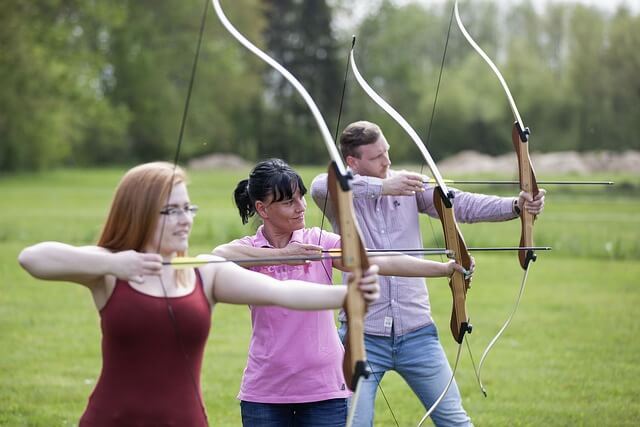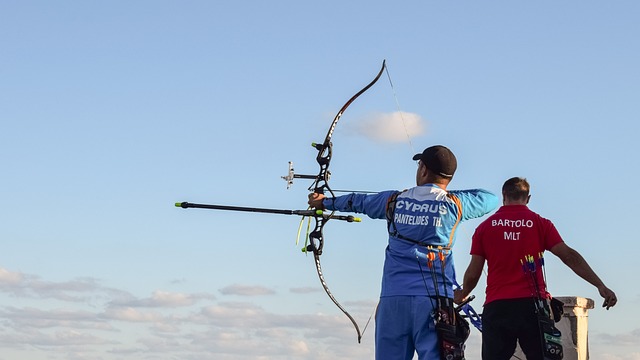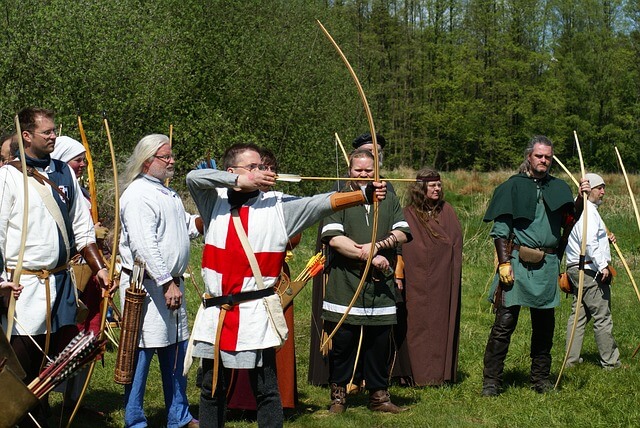Your draw weight is the most critical choice that can either make or break you as an archer. But understanding how to choose the right draw weight is not as cut-and-dried as it may seem.
So as a beginner, how do you know which draw weight is right for you?
Regardless of age or fitness level, it’s safer and more controlled to start with a lower draw weight. This allows you to build strength and endurance for heavier weights.
While many charts and guidelines suggest draw weights, they can be confusing.
In this article, we’ll simplify how to choose the right draw weight for beginners, based on common archery goals and reasons
How To Choose The Right Draw Weight For You?
Start Light
You can choose to go for many different criteria in archery, but the best recommendation for any of them regarding draw weight is to start light.
Shooting with a lighter draw weight gives you more control, less restriction, and reduces the likelihood of injury or fatigue.
It’s easier to start light and gradually increase to a heavier weight than to start with a weight you can’t control for long.
Even if you can pull back a 40lb bow once, it doesn’t mean you should choose it as your first bow.
Archery isn’t a strength sport. Like weightlifting, you wouldn’t start with the heaviest weight in the gym.
Start with a lightweight bow. Build strength and endurance, then move up in weight when you can control the bow over time
Takedown Recurve Bows
Choosing a modern takedown-style recurve bow with the ILF limb-fitting system can save money and ease your progression. This bow offers flexibility in draw weight.
You don’t have to pick the perfect draw weight from the start. If the weight feels too heavy or too light, you can swap out the bow’s limbs.
The ILF system’s unique fittings make this possible. You can replace a lighter set of limbs with a heavier set as your skills advance.
Traditional Bows
On the other hand, if you prefer the traditional one-piece bows, then you will have to buy a completely new bow every time you need to move up in draw weight, which can become costly. Especially because you’ll find that you can progress in strength relatively quickly.
As soon as you get used to the draw weight of your first bow, you’ll more than likely be eager to move up in weight.
Compound Bows
Choosing a compound bow gives you more flexibility in draw weight. This is because it’s mechanically easier to draw than a recurve, thanks to the cams and the let-off.
For instance, with a 45lb compound bow, you’re only holding around 20lb at full draw. The bow’s cams hold most of the weight for you
Related: What Is A Beginner’s Bow?
What Is Draw Weight?
The draw weight of a bow in simple terms is the measure in pounds of how strong the bow is. This is not to be confused with bow weight, which is the mass of the bow.
Draw weight is measured to an industry standard of a 28″ draw length. This means that if your bow is rated as being a 30lb draw weight, at 28″ the bow is exactly 30 lbs on the fingers.
If you have a slightly longer draw length, this just means that you will have slightly more than 30lb, and similarly, if you have a shorter draw length, you will be drawing slightly less than 30lb.
If you purchase a standalone bow like the Samick Sage, its draw weight is specific to its set-up. But with an ILF limb fitting system, you can interchange the riser and limb length.
Generally, a longer bow has a lower draw weight for a given poundage, as they aren’t loaded as efficiently. Remember, if you have long arms or a shorter bow, your draw weight will be higher than the bow’s stated weight.
Starting Draw Weights For Different Categories Of Archery
Children / Teens
Recommended Draw Weight <20lbs
Children of the same age tend to develop and grow at very different rates in terms of strength. If you have children below the age of 12, the under 15lb is going to be a good choice.

Most children, with their short arms and draw lengths, might find a 10 or 12-lb bow suitable.
For older children and teenagers, a 20lb bow is likely the upper limit for comfortable shooting without fear or intimidation
Entry Level – The Casual Archer
Recommended Draw Weight <30lbs
If you’re a casual archer, you’re probably looking to get into archery for recreation. You don’t want to go stalking through the woods to impale animals, nor do you fancy your chances at the Olympics.
You basically just want to own a bow and hang out with your friends in the backyard shooting at box targets and visiting the range once in a while.
You don’t have any real desire to progress, and therefore no commitment to any ongoing training.

If this is you, then the recommended draw weight is going to be no more than 30lb.
If you’ve never done archery before and just want to try it out, then a 20-25lb bow is probably going to be your sweet spot.
Your arrows can still reach 30, 40, and 50 metres with a 30lb draw weight. Plus, you can shoot for hours without much fatigue.
If you go higher to 35 or 40lb, you’ll likely need some fitness to control the bow.
For most people, 30lb is a good starting point for recreational archery enjoyment
Related: When To Increase Draw Weight On A Recurve Bow
The Serious Archer – Target Competitions
Recommended Draw Weight 40 – 55lbs
Once you have spent some time conditioning yourself with the lighter bows, you may have decided to take your archery a little more seriously.
Your distances have probably increased, and you’re looking for a little more bang for your buck. You may have even decided to enter a few local club competitions.

Shooting with a 40 – 55lb bow is where you’ll get the best results at this level. There really is no more to gain from jumping up in weight to a 60lb bow.
For a typical target round of 70m, you can expect to comfortably hit that distance with a bow in the high 30 to 50lb draw weights.
Between 40 and 50 lb is considered the sweet spot for control and velocity for competitive archery.
Of course, you would only transition up to these heavier weights after you’ve spent time conditioning yourself with the lower draw weights.
Related: What Is The Highest Draw Weight On A Recurve Bow?
Hunting
Recommended Draw Weight >45lb
If your goal is to hunt, then there are minimum draw weights, depending on where you reside. Usually, it’s around 40-45lb with most hunters opting for the heavier weights.
This is purely to make sure that game is being taken down in an ethical way. In order to do that the draw weight does need to be above a certain weight.

Otherwise, the animal could suffer unnecessarily.
If you are hunting for the first time, then it’s not usually advisable to jump straight in with a 50lb bow. You would be best off starting with 40lb and gradually working your way up.
Historical Archery
Recommended Draw Weight >70
Historical archery involves the heaviest draw weights. These are draw weights that most people will never need to use. For practical purposes, most bows would never require you to shoot more than 60lbs, except in hunting with compound bows where the draw weights can sometimes go to 90lbs.

Historical War bows generally start at around the 70lb mark and can go anywhere up to the 140lb mark at the extreme end of the scale.
Draw weights of that magnitude often take years of training, strength and conditioning and dedication to pull the bow back and control it.
Something as heavy as that would never be recommended for someone just starting out in archery. So if you’re looking to choose the right draw weight as a beginner, you’ll need to look at a much lighter alternative to start.
Do You Have To Progress Through Different Bow Types?
While starting with the right draw weight is one thing, there is also something of a myth that you should progress through lower-level bows to get to the higher-level bows.
Takedown Recurve Bows
Once you have passed the youth bow stage, there’s no real reason why you should stick to something like the OMP Adventure. This is considered a lower-level bow when a Bear Takedown bow (a much higher-level bow) requires the exact same level of skill to shoot.
The price points of the two bows are vastly different, but their functionality is exactly the same. So you don’t need to be proficient in the OMP before you tackle the Bear Takedown.
There may be a smoother feel to the Bear Takedown, a smoother release and less vibration, but essentially they function the same. If you can shoot well with an OMP Adventure, then you can shoot well with a Bear Takedown.
Target Recurve Bows
Should you become proficient at Barebow before trying Olympic Freestyle with the additional stabilisers and sights?
The short answer is, no, you don’t need to be good at Barebow first.
Many people start in the club system with barebow experience, but you can use sights and stabilisers without it.
Olympic Freestyle is just one archery discipline. If you choose it, your decision won’t depend on your Barebow skill level.
The faster you start using stabilisers and sights, the faster you can progress within that discipline.
Progresion in archery is not a linear process, but a choice of diverging disciplines.
The difference between buying a ‘lower’ level bow versus a ‘higher’ level bow comes down to your commitment to archery. If you’re still not quite sure if you’ll stick to archery long-term, then you may not feel as guilty spending less money on something that you may only use a couple of times.
Conclusion
Regardless of your fitness level or experience, it’s best to start with a lighter draw weight.
If you’re new to archery, don’t spend time looking through charts to find your appropriate draw weight based on age, body weight, and height.
When choosing the right draw weight, consider the type of archery you want to do. Base your draw weight on your purpose
It doesn’t need to be a super complicated process.
If you’re a casual archer, then 30lb and under is going to be perfectly fine for you to get the most enjoyment out of it. If you’re taking things a little more seriously, then go for 40, 45 or 50lbs.
If you’re a bow hunter, then check your local area’s minimum requirements for draw weight. If historical archery is more your thing, take some time to work up to the heavier weights.
Remember that going up in weight too quickly or jumping in at the wrong point can lead to unnecessary injury and improper technique, and you just flat out won’t enjoy yourself!

0 Comments